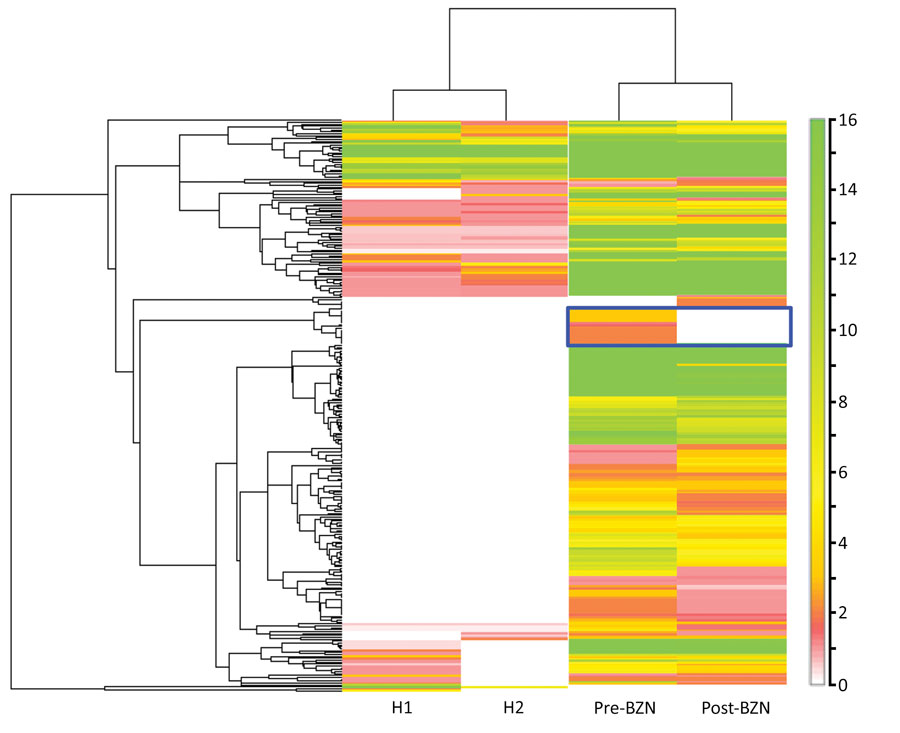Plasma-Derived Extracellular Vesicles as Potential Biomarkers in Heart Transplant Patient with Chronic Chagas Disease
Nuria Cortes-Serra, Maria Tays Mendes, Clara Mazagatos
1, Joan Segui-Barber, Cameron C. Ellis, Cristina Ballart, Ana Garcia-Alvarez, Montserrat Gállego, Joaquim Gascon, Igor C. Almeida, María Jesús Pinazo

, and Carmen Fernandez-Becerra

Author affiliations: Barcelona Institute for Global Health (ISGlobal), Universitat de Barcelona, Barcelona, Spain (N. Cortes-Serra, C. Mazagatos, J. Segui-Barber, C. Ballart, M. Gállego, J. Gascon, M.J. Pinazo, C. Fernandez-Becerra); Border Biomedical Research Center, The University of Texas at El Paso, El Paso, Texas USA (M.T. Mendes, C.C. Ellis, I.C. Almeida); Secció de Parasitologia, Departament de Biologia, Sanitat i Medi Ambient, Facultat de Farmàcia i Ciències de l’Alimentació, Universitat de Barcelona, Barcelona, Spain (C. Ballart, M. Gállego); Arrhythmias Unit, Hospital Clinic, University of Barcelona, Barcelona, Spain (A. Garcia-Alvarez); Institut d’Investigació en Ciències de la Salut Germans Trias i Pujol, Badalona, Spain (C. Fernandez-Becerra)
Main Article
Figure 2

Figure 2. Human proteomic profile of plasma-derived EVs from a heart transplant patient with chronic Chagas disease before and after BZN treatment and from 2 healthy donors. Heatmap of the identified human EV-derived proteins. Heatmap was generated from proteomic data by the Scaffold perSPECtives software (Proteome Software, http://www.proteomesoftware.com). Hierarchical clustering was performed based on the normalized weighted spectrum count. Higher numbers of human proteins were found in EVs isolated from the patient, before and after benznidazole treatment, compared with EVs derived from the 2 healthy donors (H1, H2). Scale bar indicates intensity. BZN, benznidazole; EV, extracellular vesicle.
Main Article
Page created: April 27, 2020
Page updated: July 18, 2020
Page reviewed: July 18, 2020
The conclusions, findings, and opinions expressed by authors contributing to this journal do not necessarily reflect the official position of the U.S. Department of Health and Human Services, the Public Health Service, the Centers for Disease Control and Prevention, or the authors' affiliated institutions. Use of trade names is for identification only and does not imply endorsement by any of the groups named above.
